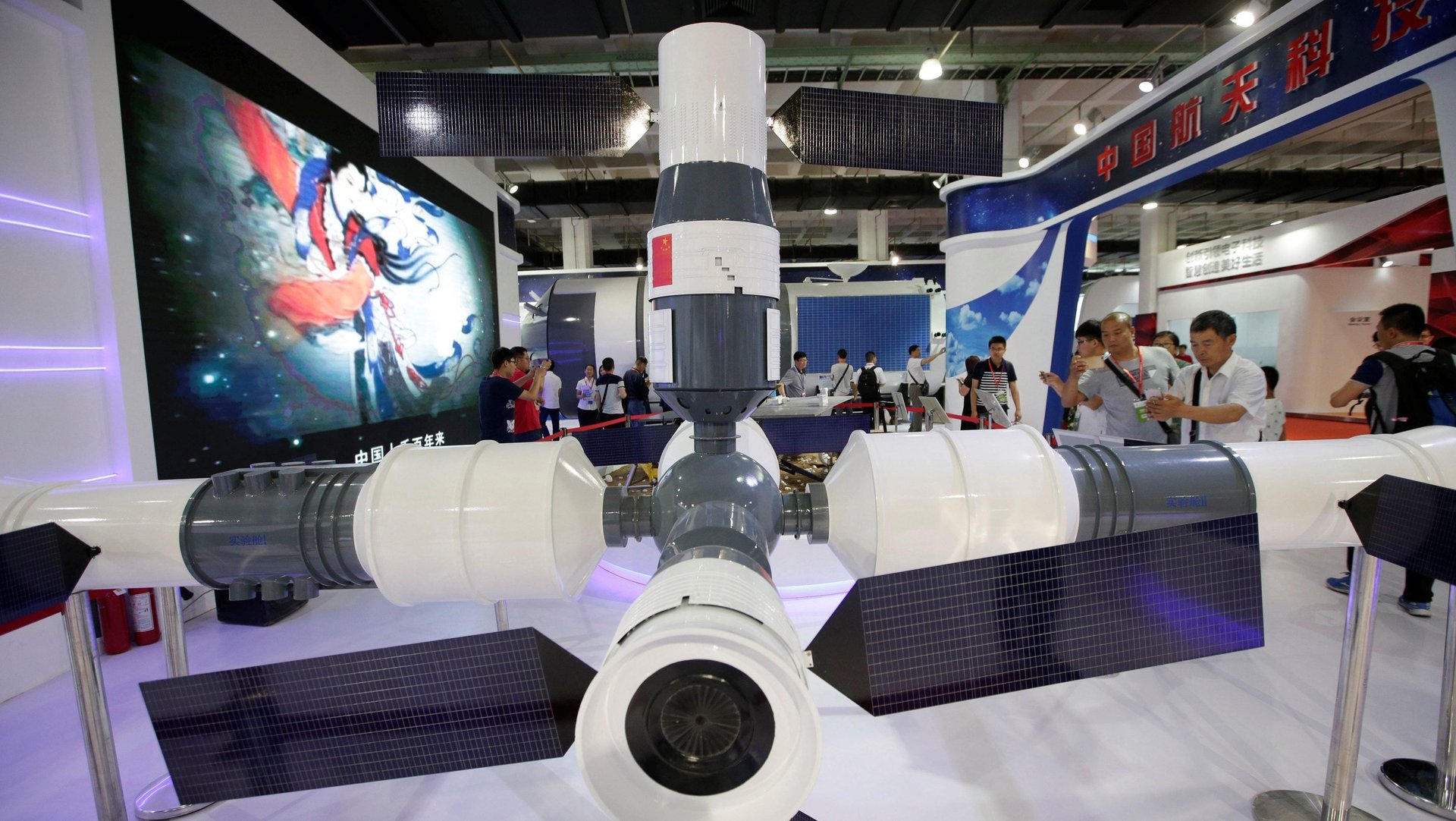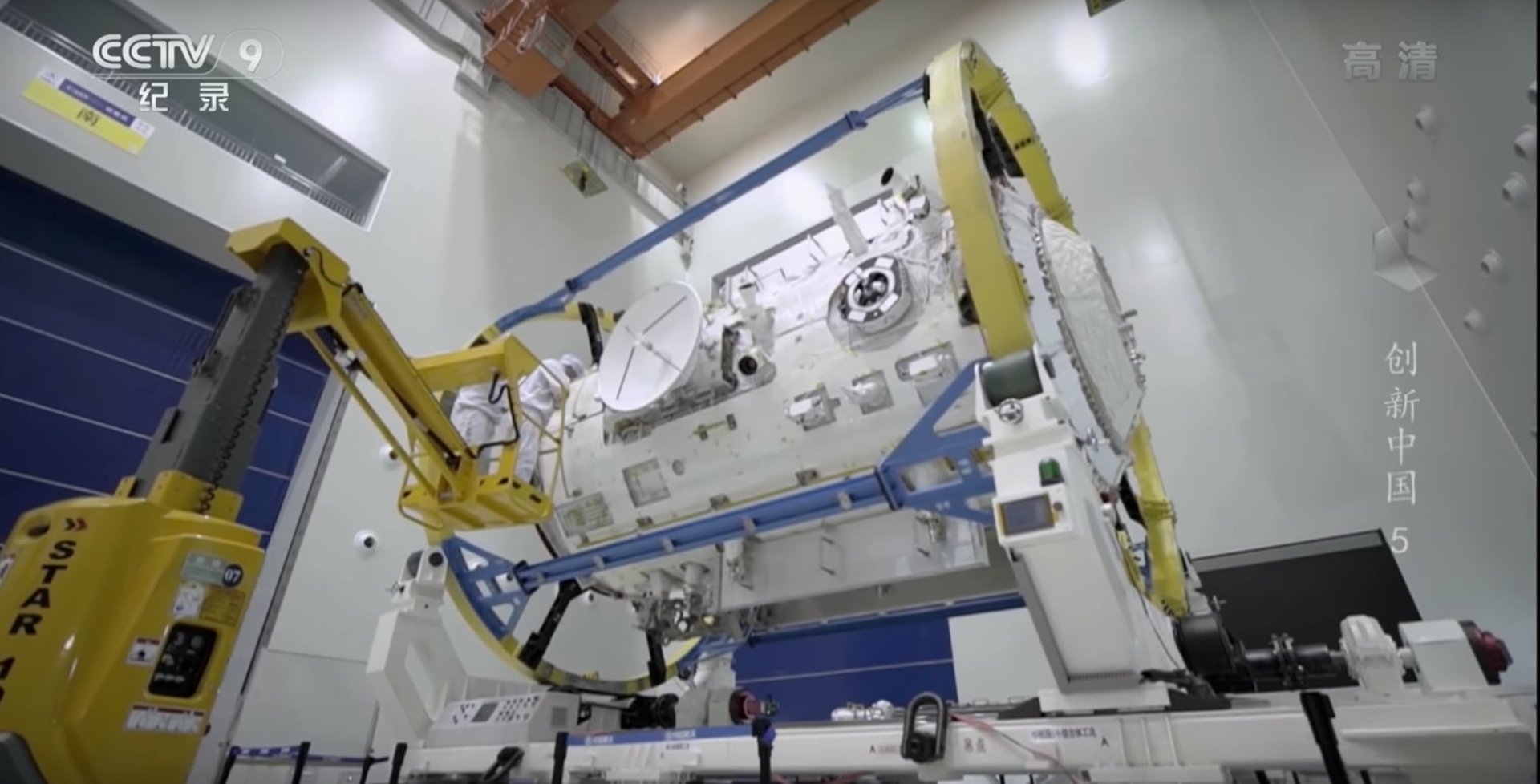Here’s what we know about China’s future space station
China’s going to start sending parts of its future space station into space as soon as 2020, with the aim of having it up and running by 2022. The country’s space agency this week invited countries to come and carry out out research on the facility.


China’s going to start sending parts of its future space station into space as soon as 2020, with the aim of having it up and running by 2022. The country’s space agency this week invited countries to come and carry out out research on the facility.
While it’s a welcome gesture of international cooperation, particularly as the International Space Station starts winding down, it’s also a political jab at the US, which lent impetus to China’s dream of having its own space station by barring it from being able to use the ISS. “In a way, the lockout by foreign nations has helped China achieve innovation,” the station’s chief designer Yang Hong told state broadcaster CCTV (video).
In recent months, the country’s space agency’s been surfacing tidbits about what the space station will look like and its capabilities. Here are its key features.
What does it look like?
China’s first space station will be made of three modules joined in a T shape, according to a handbook released Monday (May 28) (pdf, p.3) by China’s Manned Space Agency and the UN Office for Outer Space Affairs. The station will weigh some 66 metric tons (72 tons), which is around one-sixth of the International Space Station. When docked with manned spaceships and cargo vehicles, the station may reach around 100 metric tons (110 tons).
The first module Tianhe-1, or “harmony of the heavens,“ was completed last year and will be launched first. Weighing some 20 metric tons (22 tons), it’ll be the core module of the space station, where astronauts will stay. The space station is by far the largest and most complex spacecraft China has built yet, Yang, the chief designer, told the state broadcaster (video, 25:03)

China built the space station from scratch, according to Yang, mostly because the country couldn’t use the ISS due to concerns over technology transfer and national security raised by the US, which led the development of the ISS with 14 other nations.
It’s unclear how much China has spent on developing the space station, but it’s probably a safe guess that it’s been done quite economically. Much of the construction is being carried out by the country’s main space contractor, the China Aerospace Science and Technology Group (CASC), and its subsidiaries.
NASA has spent over $100 billion on the International Space Station, with about $3 billion a year going on maintenance—about the same amount China spends every year on its entire space budget. (China’s scientists have proposed tripling the budget spent on space science, such as satellite development, to $2.6 billion for 2026 to 2030.)
When will it be launched?
The construction and launch of China’s space station is composed of several stages, similar to the International Space Station, which was put together over multiple trips starting in 1988. When completed, it will orbit at a height between 340 kilometers to 450 km (pdf, p.10).
Tianhe-1 is expected to launch from the Wenchang Spacecraft Launch Site in southern China in 2020, according to Zhou Jianping (video, link in Chinese), chief designer of China’s manned spacecraft program, which includes building the space station. The other two experiment modules, Wentian, or “quest for the heavens,” and Mengtian, or “dreaming of the heavens,” will join it later. The space station could start operating in 2022.
The station builds on the knowledge China gathered from its first space station prototype, the space lab Tiangong-1, which came crashing back to earth in April after spending six years in space.
What will China do with it?
It’s possible that at some point, for a brief span, China may be the only country with an operational space station. The ISS was originally planned for use to 2020, which was then extended to 2024. But by 2028, it will be defunct, NASA’s administrator has said.
China expects to have its station in operation for at least 10 years. Up to six astronauts will be able to stay at a time for at least 180 days, and will explore topics such as how space living affects humans, microgravity physics, and material science.
Beijing’s already portraying its station as a beacon of global cooperation—this week it said it will welcome other countries who want to conduct experiments aboard its space station.
“The China Space Station belongs not only to China, but also to the world,” said Shi Zhongjun, China’s ambassador to the UN in Vienna. “Outer space should become a new domain for promoting the common interests of everyone, rather than a new battlefield for competition and confrontation. Guided by the idea of a shared future, the China space station will become a common home in space for all humankind.”
Shi’s mention of “shared future” is a term the country’s president Xi Jinping has often used since taking power in 2012. China has been voicing the idea across basically every field of endeavor—from global trade to climate change.
The concerns expressed by the US may hold back some nations from working with the Chinese station—but other countries with nascent space programs may well feel differently.